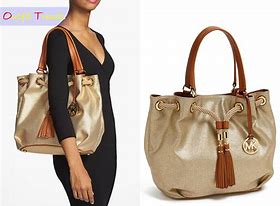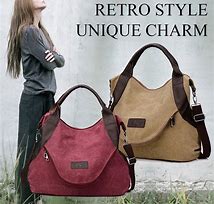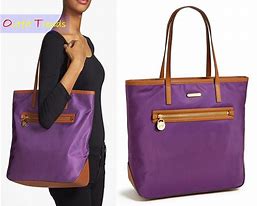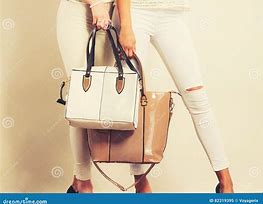The Evolving Landscape of Fashion Bags: Trends and Influences in Today’s Society
In the fast-paced world of fashion, accessories play a crucial role in defining personal style and making a statement. Among these, fashion bags have emerged as not just functional items but as symbols of status, creativity, and individuality. In today’s society, the trend of fashion bags has evolved, driven by a dynamic interplay of factors ranging from sustainability and technology to cultural influences and changing lifestyles. This article delves into the multifaceted world of fashion bags, exploring the latest trends that are shaping the way people carry, accessorize, and express themselves.
- The Intersection of Style and Functionality:
Traditionally, bags were primarily functional accessories designed to carry personal belongings. However, contemporary fashion has blurred the lines between utility and aesthetics. Today’s fashion bags seamlessly integrate style and functionality, offering consumers a wide array of designs that cater to their diverse needs. From the practicality of backpacks and crossbody bags to the sophistication of clutches and the elegance of tote bags, the options are endless.
Designers are now focusing on creating bags that not only complement an outfit but also serve a specific purpose. The rise of multifunctional bags with built-in charging ports, laptop compartments, and organizational features reflects the tech-savvy nature of modern society. As people increasingly rely on their devices, fashion bags are adapting to accommodate this shift in lifestyle, providing both style and practicality.
- Sustainability in Fashion Bags:
In recent years, the fashion industry has faced growing scrutiny regarding its environmental impact. Consumers are now more conscious of their purchasing decisions, and this shift in mindset has influenced the trend of sustainability in fashion bags. Sustainable materials, ethical manufacturing processes, and eco-friendly practices are becoming key considerations for both designers and consumers.
Many brands are now prioritizing the use of recycled and upcycled materials to create fashion bags. From bags made of recycled plastic bottles to those crafted from repurposed textiles, sustainable options are increasingly accessible. Furthermore, the demand for cruelty-free alternatives has led to the rise of vegan leather, a synthetic, animal-friendly material that mimics the look and feel of traditional leather.
The emphasis on sustainability extends beyond materials to the longevity and timelessness of design. Consumers are gravitating towards classic styles and durable materials that withstand trends, encouraging a shift towards a more sustainable and mindful approach to fashion.
- The Influence of Technology:
Technology has not only impacted the functionality of fashion bags but has also played a significant role in the way they are designed, marketed, and consumed. Social media platforms, online shopping, and digital influencers have transformed the way trends emerge and spread. The digital age has given rise to a global fashion community, where inspiration is drawn from various cultures, styles, and influencers, contributing to the diversification of fashion bags.

- Cultural Influences on Fashion Bags:
Fashion has always been a reflection of culture, and fashion bags are no exception. In today’s globalized world, cultural influences from different regions are intermingling, creating a melting pot of styles and inspirations. Ethnic patterns, traditional craftsmanship, and cultural symbols are finding their way into the design of fashion bags, adding a layer of diversity and richness.
Fashion designers are increasingly drawing inspiration from various cultures, celebrating diversity and inclusivity. This trend is evident in the use of vibrant colors, intricate patterns, and traditional techniques in the creation of fashion bags. As consumers seek authenticity and meaningful connections to the products they purchase, the incorporation of cultural elements adds depth and resonance to fashion bags.
In addition to cultural diversity, the fashion industry is witnessing a growing emphasis on representation and inclusivity. Brands are recognizing the importance of offering a diverse range of sizes, colors, and designs to cater to a broader demographic. This inclusivity extends to the design of fashion bags, with brands embracing a more diverse and representative approach in their advertising and product offerings.
- Luxury and Streetwear Fusion:
The lines between luxury and streetwear fashion have become increasingly blurred, giving rise to a trend where high-end designers collaborate with streetwear brands, and luxury items are infused with casual and urban elements. This fusion has permeated the world of fashion bags, resulting in designs that combine opulence with a laid-back, street-inspired aesthetic.
Luxury fashion houses are collaborating with streetwear labels to create limited-edition collections, often featuring iconic logos, bold graphics, and unconventional materials. These collaborations not only attract a younger and more diverse audience but also challenge traditional notions of luxury.
In the realm of fashion bags, this fusion is evident in the use of sporty elements, such as backpacks with high-end leather detailing or high-fashion logos on casual messenger bags. The result is a dynamic and eclectic range of bags that cater to the evolving tastes of a broad consumer base.
- Customization and Personalization:
As consumers seek unique and personalized products, the trend of customization has gained significant traction in the fashion industry, extending to fashion bags. Brands are offering customers the opportunity to personalize their bags, whether through monogramming, choosing custom colors, or adding unique embellishments.

The rise of customization aligns with the growing desire for individuality and self-expression. Fashion-conscious individuals no longer want to adhere to rigid trends dictated by the industry; instead, they want to play an active role in shaping their style. Customized fashion bags not only allow for personal expression but also create a sense of ownership and attachment to the product.
Many brands and designers are leveraging technology to facilitate customization, offering online tools that allow customers to design their bags virtually before making a purchase. This innovative approach to personalization reflects the industry’s responsiveness to consumer preferences and the desire for a more tailored and meaningful shopping experience.

The trend of fashion bags in today’s society is a dynamic and multifaceted phenomenon shaped by a confluence of factors, from technological advancements and sustainability concerns to cultural influences and changing consumer preferences. The evolution of fashion bags goes beyond mere aesthetics; it reflects the evolving values and aspirations of a globalized and interconnected world.
As we continue to witness the blurring of traditional boundaries in fashion, the future of fashion bags seems poised for even more innovation and diversity. Sustainability will likely play an increasingly pivotal role, driven by a growing awareness of environmental issues. Technology will continue to reshape the way bags are designed, manufactured, and consumed, providing consumers with ever more personalized and tech-enhanced options.
Cultural influences will persist, celebrating diversity and fostering a sense of global interconnectedness. Whether it’s the fusion of luxury and streetwear or the incorporation of cultural elements, fashion bags will continue to be a canvas for creative expression and a reflection of the rich tapestry of human culture.
In a world where individuality is celebrated, the customization trend is expected to grow, allowing consumers to assert their unique style preferences and create bags that resonate with their personal narratives. As the fashion industry adapts to the changing landscape, the future of fashion bags holds exciting possibilities.

